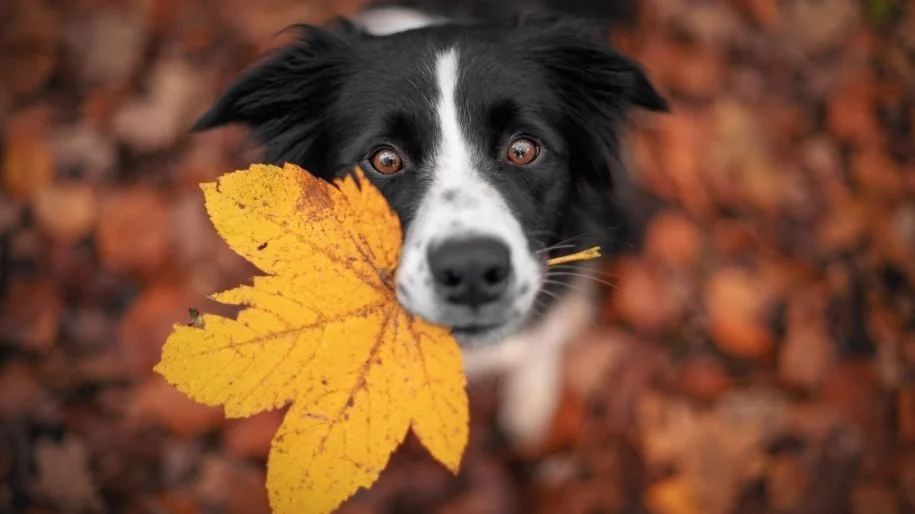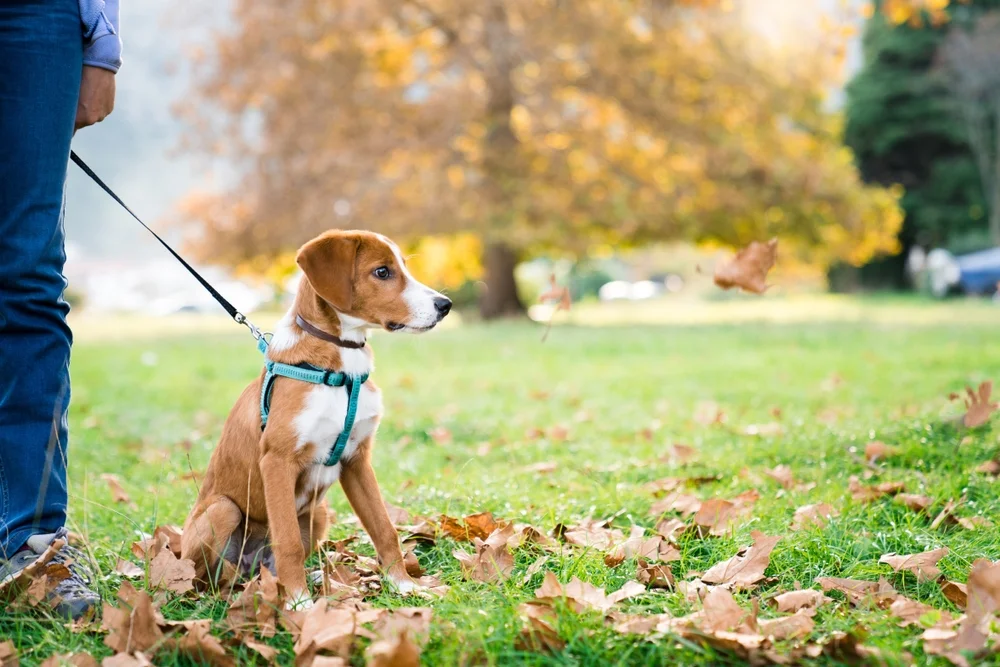PET CARE
Fall Safety Tips for Pets
Fall arrives with its own comforts and delights — for us and our pets. Many of us begin seeing leaves change into beautiful colors, and cooler temperatures become more common. Your pet probably welcomes the crisp autumn air too, after the hot and humid “dog days” of summer.
However, the fall season can also bring out hidden dangers for our pets — like allergies, pests, colder weather, and household toxins.
As you enjoy the transition to a cozier season, be sure to keep your pets in mind. Consider the following fall pet safety tips to help keep your furry family healthy and safe all season long.
Fall for MetLife Pet’s Customizable Dog and Cat Insurance
Explore Your Options
Keep Seasonal Allergies and Parasites at Bay
Just like their pet parents, dogs and cats can be prone to seasonal allergies. While spring or summer may be more commonly thought of as allergy season, autumn still has its challenges because of plants that pollinate during this time.1
Look out for pet allergy symptoms such as skin irritation and inflammation, itching, dark or red skin areas, and crusty or scabbed skin. On the surface, these symptoms may not seem like a big deal. But when left untreated, they can easily lead to larger issues such as skin infections or hot spots (for dogs). If the case is severe, your pet can even experience hair loss and bleeding.1
Help prevent allergy issues for your pet by identifying fall allergy triggers and visiting a veterinarian for treatment if you notice any symptoms.
Parasites like fleas and ticks are still a concern, even after summer is gone. Walking through fallen leaves or playing in piles of raked leaves is one way your pet can pick up ticks. Continue to be diligent about parasite prevention and tick repellent for your furry friend, and check your pet for ticks after spending time outdoors.2
Ensure Pets Stay Away From Toxic Items
The use of rat and mouse poisons increases during the fall as temperatures dip and rodents seek a more comfortable environment by moving inside your home. Rodenticides (rodent poisons) are highly toxic to pets. If your dog or cat eats these toxins, poisoning symptoms can start quickly and the result could be deadly. Try pet-safe options, work with a professional, or keep pets away from areas where rodenticides are used or stored.2
Like rodenticides, it’s a good idea to keep all lawn and garden products, as well as yard and compost waste, in secure containers away from your pet’s reach. Be mindful of toxic plants both indoors and outdoors. Mushrooms — which thrive in wet fall weather — and dead leaves can be very harmful if eaten.2
As you get your cool-weather clothes out of storage, you could expose the mothballs you used to help store them. These might look like fun treats to your pets, but they can cause poisoning if eaten.2
If you believe your pet has ingested a poisonous plant, mushroom, or toxic product, contact your emergency vet ASAP. You can also call the Pet Poison Helpline at (855) 764-7661 or ASPCA Animal Poison Control Center hotline at (888) 426-4435 for 24/7 support.
Be Prepared for Weather and Daylight Changes
Fall temperatures tend to vary based on your location. One day can feel like early August, and the next night you may need to prepare for frost. It’s important to be prepared for these fluctuations. If you live in a cold climate or have a pet who struggles to stay warm outdoors, help them out by dressing them in appropriate clothing for your outing. You can check your local pet stores for coats, rain jackets, or sweaters for your furry friend to wear to help keep them warm.
Keep in mind that daylight will become shorter as we move further into the season. This means early morning and evening walks become darker. While you can see motorists, they may not see you and your pet. Be aware of your surroundings and wear bright-colored clothing. Have your pet wear a reflective collar or harness. And when you can, try to take walks while there’s still daylight.
Protect Their Joints and Paws
Cooler weather can make it more uncomfortable for pets with older or arthritic joints. You may want to provide a warm and extra-cushioned spot to lie in as the nights and days get cooler, or use a sweater for colder outdoor walks. And if your pet doesn’t seem to want to spend too much time outside, try playing or exercising inside where it’s warm.3
Toward the end of the fall season — when frost, snow, and ice start showing up in some locations — rough outdoor terrain can potentially damage paw pads. Keep them protected with boots or apply pet-safe balms that can help reduce the chance of cracks and cuts.4
Your pet may also benefit from having their paws wiped clean after time outside, whether it’s to remove bits of snow and ice, or pollen and dead leaf debris.4
Be Mindful of Hazardous Fall Activities
There’s nothing quite like a crackling campfire to keep warm on a cool fall evening, or flickering candles around the home to set a cozy atmosphere. While these may be fun or relaxing fall staples for you, your pets might not understand the danger of fire if they get too curious or close. Keep a watchful eye on your pets when enjoying a campfire or open-flame candles.
Another popular fall activity is hunting game like deer and turkey. Avoid bringing your pet to areas where hunting is known to occur, or wear bright orange if you do spend time in these areas. If you live near the woods and have cats or dogs that spend time outside, it can be smart to keep them leashed during hunting season or provide a barrier to keep them from wandering into the woods.2
Keep Back-to-School Supplies Out of Reach
The arrival of fall ushers in back-to-school time, and that means school supplies are on shopping lists and more available to pets. But if they chew on batteries, erasers, markers, or glue, it can spell trouble for your furry friend. Not to mention if they get into backpacks or lunchboxes and snag medication, toxic foods, or gum. These could cause a variety of issues for your pet, like digestive upsets, poisoning, or blockages if something gets stuck. Be sure to pick up anything your pet could potentially reach.2,5
Keep a Close Eye on Pets During Holidays
Halloween and Thanksgiving offer chances to bring people together for seasonal celebrations. While you can certainly enjoy them with your furry family, here are a few tips to consider that can help ensure pets have a safe and happy time.
Think safety first when it comes to pet costumes
If you want to dress your pet up for Halloween, try a bandanna or decorative collar as opposed to a full-body costume. However, if your pet likes wearing a costume, choose something that fits correctly and doesn’t restrict their movement, breathing, or senses.6
Skip costumes with hanging fabric or buttons. Any extra pieces could pose a choking hazard or, if ingested, could cause a blockage. It’s also recommended to supervise your pet while they’re wearing a costume so they don’t accidentally harm themselves.6
Avoid accidental escapes and decoration mishaps
If you plan on having guests in and out of your home, make sure your pet can’t escape during all of the added commotion. Designate a sanctuary room for your pets — a place where they can feel comfortable and calm during parties. You can also consider putting up a pet or baby gate between your pet and your entry door.
Some cats and dogs may experience anxiety with holiday visitors. If your pets are afraid of other people or tend to overreact to strangers in the home, you may want to share this information with all prospective visitors. So if your furry friend tends to try running out the door, your guests can be more cautious when arriving and leaving.
Holiday decorations can be a fun and festive way to celebrate the holidays, but they can also become hazardous for curious cats and dogs. Decorations like corncobs, small dried fruit, gourds, pinecones, garland, or jack-o-lanterns could cause choking, burns, blockages, and more if pets decide to play with or chew on them. Try to keep decorations pet-friendly and out of reach.6,7
Holiday food safety
Certain autumn treats might pose a threat to your furry friend — even if we find them delicious. Some of these potential hazards include chocolate, cooked bones, onions and garlic, alcoholic beverages, raw bread dough, candy, and other sweet treats containing xylitol, the artificial sweetener that’s toxic to dogs.1,6,7 Consider having a plan in place to keep potentially hazardous food out of your pet’s reach during the holiday season.
Remember, some commonly used fruits, like raisins and grapes, can also be toxic to pets even in small quantities.7 If you think your pet has eaten something toxic, call your vet ASAP.
If Your Pet Needs a Trip to the Vet, MetLife Pet Can Help
Fall can be a cozy and enjoyable time of year for you and your pet. Keep these autumn pet safety tips in mind to help ensure your furry family gets through the season safely. But for those times when your dog or cat has an accident or gets sick, a MetLife Pet Insurance policy can help you cover vet costs.
With reimbursements up to 90% on things like vet exams, medication, X-rays, and surgery, you can get your pets the care they need without your bank account absorbing the entire cost.8 Explore your plan customization options today and help protect your pet against fall mishaps. Start with a free quote.



